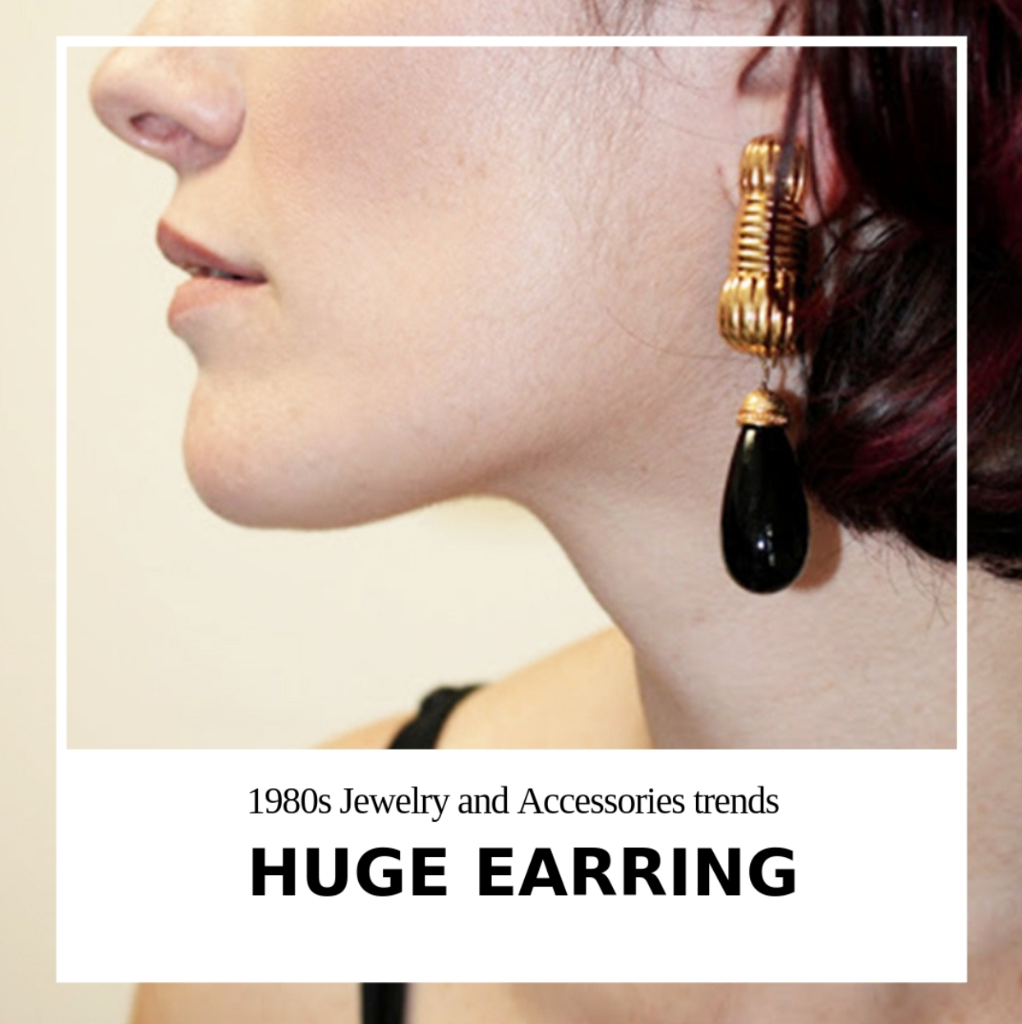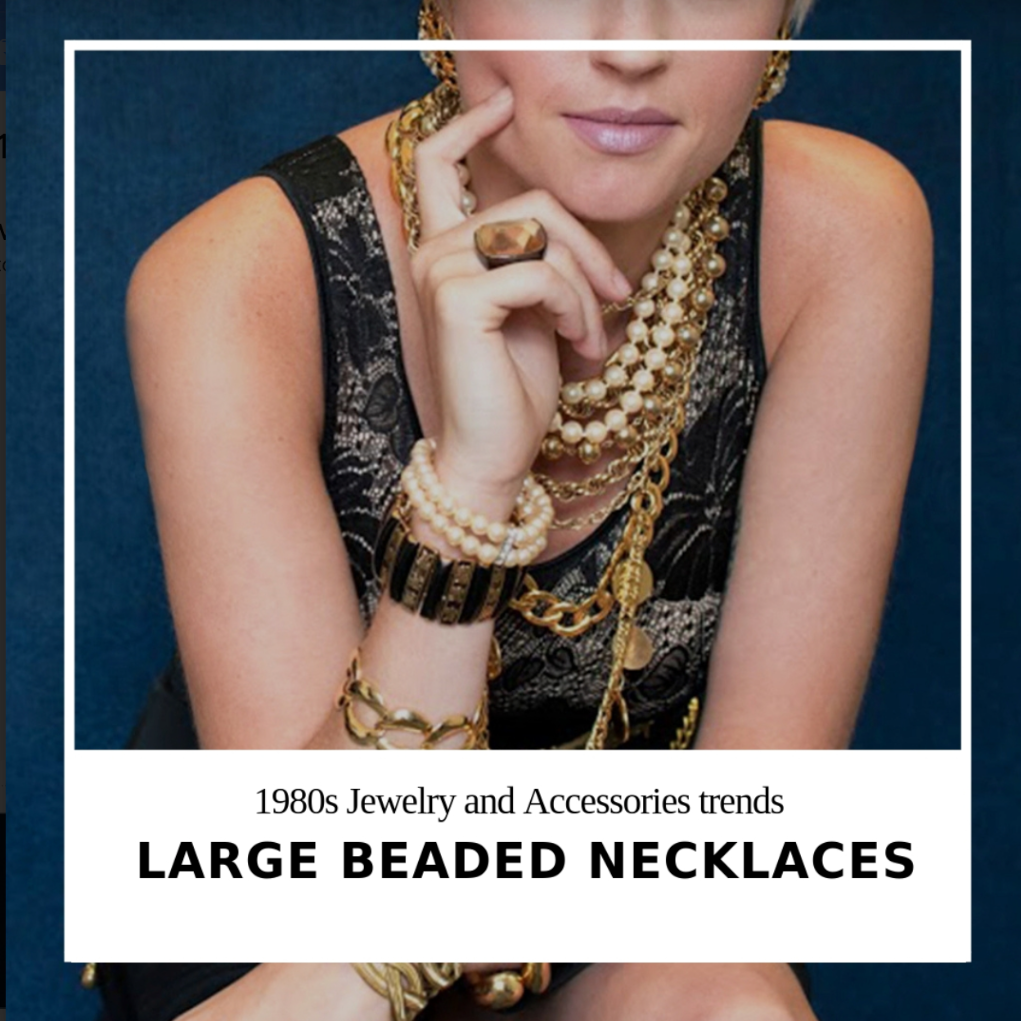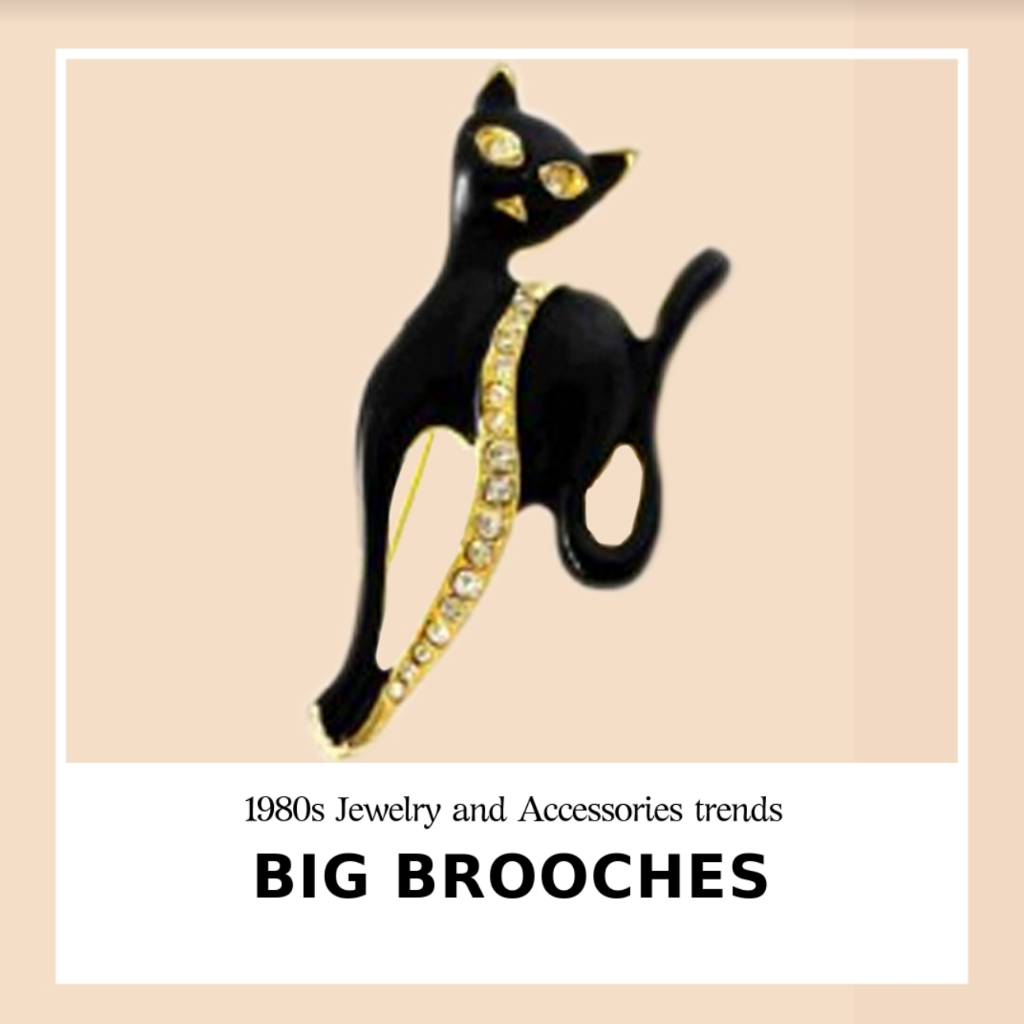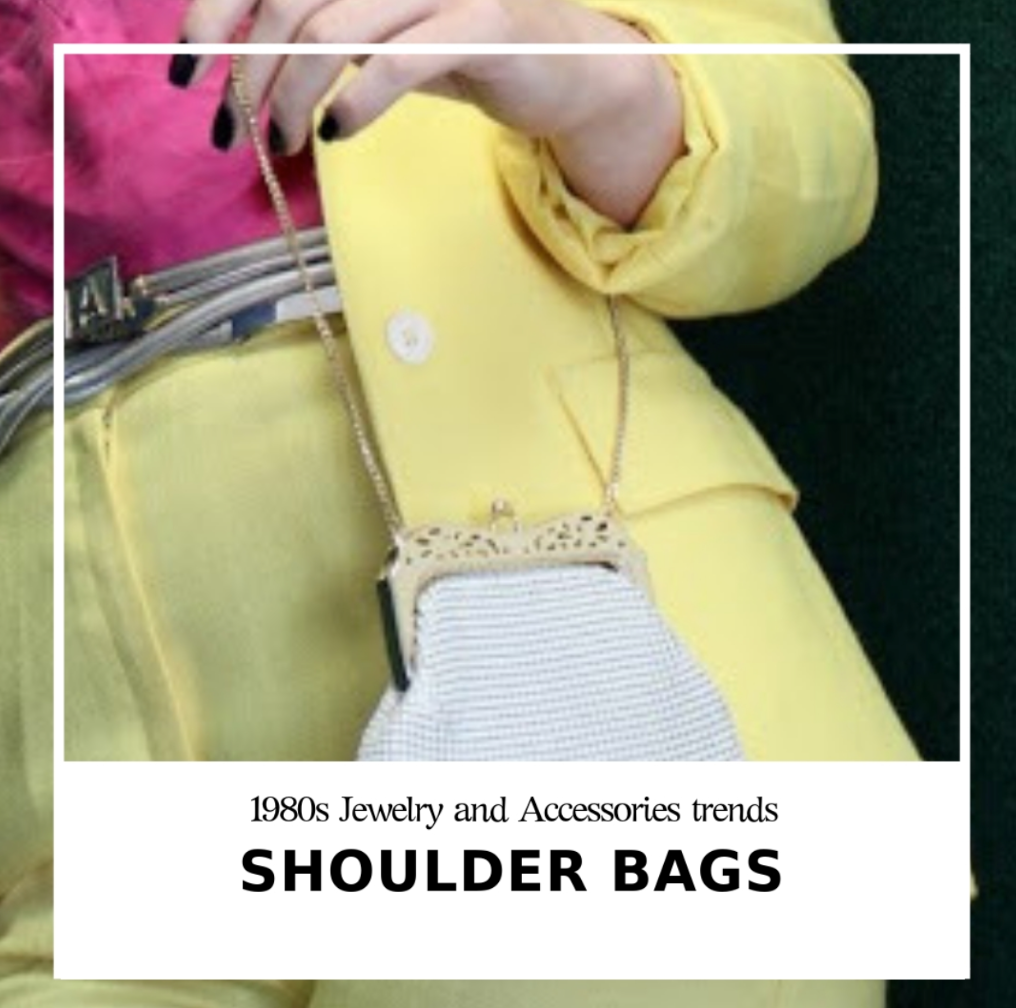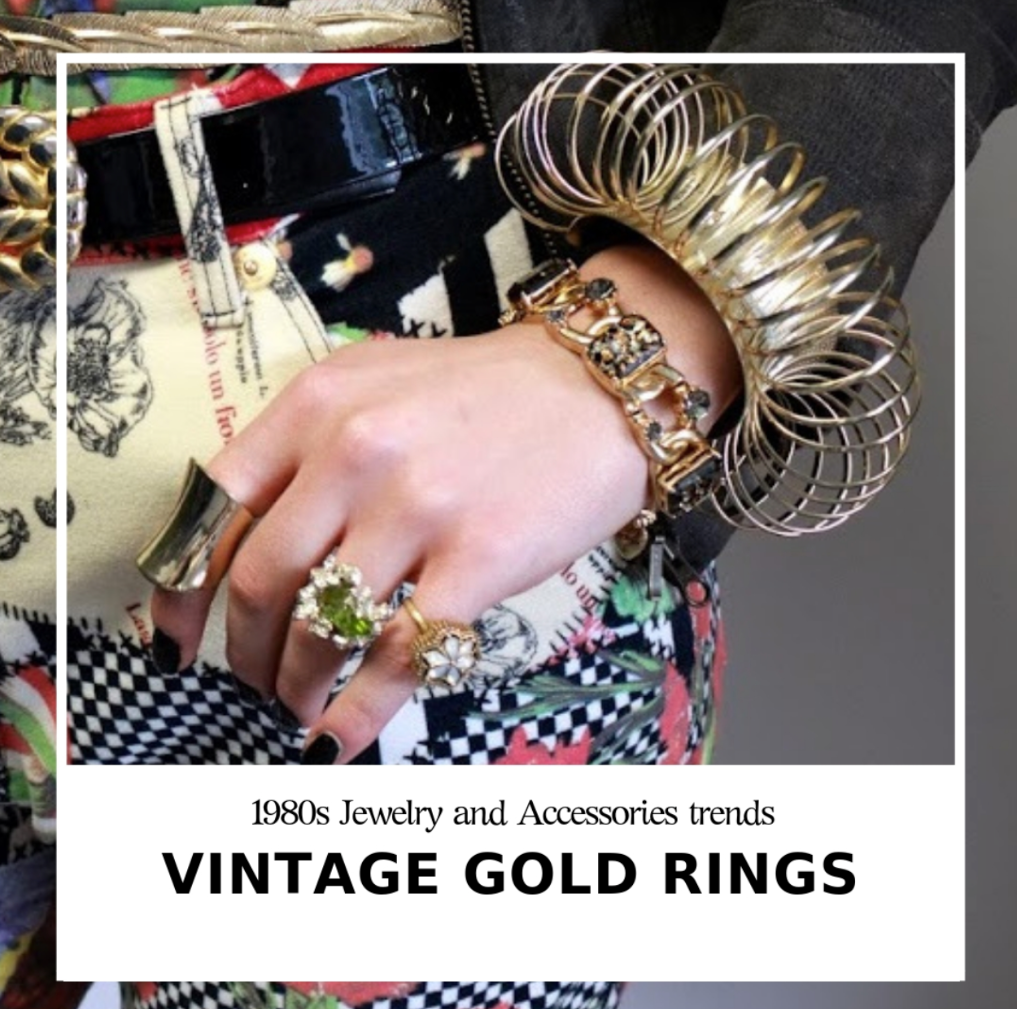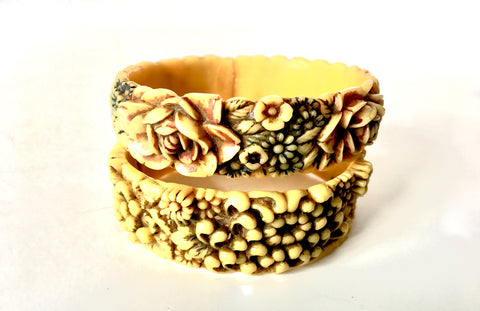talkingfashion » bold accessories
-
"Top 10 Bijoux & Accessories Styles of the 80s" by Ms. Anna
-
80s Trend Digital Media under Flavia Lobato's artistic view
When bold just int's bold enough? Add more
We voted oversized glasses & earrings the top accessories!
We think she is a high performance woman! Ignite the fire! -
Fashion Rationed: World War II Style
Fashion Rationed: World War II Style
By Paige McKirahan
Though The Great Depression was nearing its conclusion at the end of the 1930s, the fashion industry was still shaking from the effects of its economic downfall. Moving away from the tubular styles of the 1920s, this pre-war period saw the revival of a feminine, waist cinching silhouette and made way for mass, factory produced styles. Don’t worry—corsets were still out of trend and the type of form fitting style that the ‘30s loved was that of an accentuated natural waist. The innovations in industry that made ready-to-wear a staple in design also allowed none other than Elsa Schiaparelli to pioneer zippers, making them a staple in this decade’s garments as they were ultimately less expensive than buttons.
Though daywear styles were simple and refined, evening wear remained glamourous and continued garnering inspiration from Hollywood starlets. Backless gowns became the centerpieces of long gowns and chiffon, silk, crepe-de-chines, and satin were used to create elegant and flowing lines. Women’s pants also became a huge hit in the late 1930s, popularized by “sailor” style which included buttons on the front of the high waist. Beach pajamas, one piece jumpers with wide legged pants, also became a wardrobe staple for women at the time as they were commonly worn for beach or relaxation days.

1938 women’s pants
(image credit to vintagedancer.com)
The beginning of World War II in 1939 placed an emphasis on global conflict rather than haute couture, pushing creative expression to the backburner. To support the war effort, common clothing materials began to be rationed, taking a toll on style and calling for alternative fabrics. Rather than using nylon and wool, which were both needed by the military, a new synthetic fabric called rayon was extremely popular for clothing in these wartime years. These fabric restrictions put a renewed emphasis on legs that we previously saw during World War I; less fabric meant simple designs with shorter hemlines were in now style out of necessity. Fabric rations were also responsible for the creation of the two-piece swimsuit in 1946 as creating a bikini was more economical than one pieces.
An unforeseen shift was brought along in the 1940s that altered the fashion world forever; Paris was knocked from their throne as the leader in haute couture and style, with New York emerging as the new influencer. Parisian couture houses garnered disapproval from the public and many grew weary of top designers as it seemed they were in cahoots with occupational forces. Coco Chanel specifically closed down her studio during this period as she was criticized for her relationship with a high ranking Nazi official, tarnishing her brand. Claire McCardell, American designer, made use of fabrics that were not in high demand by the military like cotton denim, jersey, gingham, and calico for everyday styles. “War Wise” became trendy and patriotic colors were the “it” aesthetics of the decade as American style was making its first true marks on the industry.

Claire McCardell design, 1946
(photo credit to enews.com)
As the Great Depression lead into the new war, costume jewelry was still a wardrobe staple as movie star glam style reigned. Clothing was relatively plain and lackluster, so jewelry was large, colorful and decorative to compensate. Metal was in short supply, so sterling silver became the go to material and provided a base for large, colored gemstones. Vermeil also became popular for these over-the-top pieces; the material, which is a base of silver plated with gold, gave the look of luxury while remaining inexpensive. Cheaper materials such as wood, shell, glass, bakelite, and fabric were used to created pieces with patriotic symbols, flowers, bows, and whimsical animals. Popular motifs during this time included novelty shapes and prints, nature, flowers, fruits, and vegetables. Patriotic themes were common as it was important to keep morale up during the War; many wore brooches that were in the shape of the letter “V”, which was a common symbol for victory in this decade.

Cartier "V" brooch ad, 1945
(image credit to vintagedancer.com)
Despite the glitz of the roaring ‘20s, the late ‘30s and ‘40s were forced to forgo glamourous habits for those more modest on account of the current political and economic climates. Regardless, this time period shows that fashion and style can persevere, molding with the restrictions of the time. Limits on materials forced designers to become innovators, creating timeless silhouettes that were not previously utilized in the industry. American courtiers really began to step into the global spotlight, and New York as a city secured its place as an emerging fashion leader. To celebrate this victory, head over to our collection to get you some ‘30s and ’40s pieces of your own!
-
Fashion’s Favorite Week Returns
Fashion’s Favorite Week Returns
By Paige McKirahan
Hello fashionistas! As you may know (or we would hope so, anyway), New York Fashion Week has finally returned to give us an inside look at this upcoming spring and summer’s hottest trends. Beginning on September 5th, these seven days of glamour attract buyers, press, and pop culture phenomena to the streets of New York with the goal of celebrating designers in prestige and style.
NYFW, which began in 1943, was created by Eleanor Lambert, a press director for the New York Dress Institute. At this time, you wouldn’t see your favorite actress or singer in the front row; what was formerly known as “Press Week” was truly only open to the press, with no buyers or industry figures permitted. She created the event to pull the public’s attention away from the fact that they were unable to travel to Paris to view shows during the second World War and hopefully shift focus to American designs. The event saw huge success and lead to publications like Vogue being more open to discussions of American creations more than ever before.

Eleanor Lambert at the first NYFW
(photo credits to guestofaguest.com)
In the mid 1950s, the name of the event was changed to “The Press Week of New York” and shows were held all over the city in venues of the designer’s choice. After that method proved to be disastrous (i.e. Michael Kors model’s getting hit with falling pieces of ceiling. Ouch!), the head of the Council of Fashion Designers of America, Fern Mallis, moved all of the shows into white tents in Bryant Park. After that change in 1993, the name of NYFW was changed to “7th on 6th” after the event company that was founded by CFDA. 8 years later, IMG bought the event and officially renamed it New York Fashion Week. Mercedes-Benz, the current sponsor of the shows, has been supporting the Week since 2007, and the event grew so large that white tents in Bryant Park could no longer accommodate all of the insiders dying to gain access to these shows. The event was then held in Lincoln Center until 2014, then the skylights at Moynihan Station and Clarkson Square up until its arrival at the current venue.

Bryant Park during Fashion Week c. 1998
(Image credit to nytimes.com)
This year, the shows are being held in galleries at Spring Studios on Varick Street and many designers choose to utilize this space. In contrast, many also choose to have their events at more original venues outside of the IMG umbrella, like the John Elliot Co. show that could be seen at Pier 62 Skate park. Though Elliot put on a fabulous display, we were looking to spotlight a designer that is the true epitome of fabulousness: Jeremy Scott.
Scott’s SS ’19 show was a playful look back at Jeremy in his early teens; the designer reminisced to his star studded audience about the fact that he most literally does not throw anything away and hasn’t since he was around 13 years old. He recalled that at that age, he once threw away a shirt he though he didn’t like anymore, regretting it only days later. That anguish prompted him to keep everything from that point on, creating a personal collection and style that was beautifully emulated in this NYFW display.
For this show, the designer ultimately looked inward for inspiration; as his own muse, he reflected on all the years that he was designing his own clothing and looks with no one to practice them on but himself. Polaroid’s of an adolescent Scott adorned pieces in the collection along with sequins, crystals, and 3D embroideries reading “RIOT”, “PEACE”,”SEX”, and “SHOCK”. His classic 1990s aesthetics were refined on an entirely new level than his previous work; his polishing in the leather and sport mesh pieces is sophisticated despite their youthful inspiration. Though he makes overt political statements with his weird and in-your-face style, it has a sense of refinement that allows his influence to truly shine through.
Here are some of our favorite looks from the show. What do you think—fab or drab?




Spring 2019 Ready to Wear Jeremy Scott
(Photo credits to vogue.com)
Take a note from Jeremy and be unapologetically yourself in the most brazen, emphatic way. Who better to be a muse for your creative expression than yourself?
Be sure to keep an eye on our blog over the next week as we will be spotlighting our other favorite Fashion Week shows and designers! To watch the magic happen on the runway in real time, head over to http://nyfw.com/live to view NYFW’s personal livestream!
-
Celluloid, Bakelite, and Plastic: What Are They and How Are They Different?
Celluloid, Bakelite, and Plastic: What Are They and How Are They Different?
By Paige McKirahan
You walk into Barney’s New York with the intention of accessorizing for a night on the town and come to find bangles of all colors. They’re beautiful, light, and handmade. You wonder how normal plastic could look so elegant and check the tag, realizing it is made of vintage bakelite. What is this gorgeous material?
Celluloid and bakelite are vintage jewelry staples often mistaken for the normal plastics that are usually casted to make jewelry. These materials are among some of the first man made plastics on the market. Celluloid predates bakelite and was created in an attempt to win a contest calling for someone to create a substitute for ivory in the 1860s. Though it did not win the contest, its creator, John Hyatt, chose to begin a manufacturing company that used the plastic to create billiard balls. The problem, though, was that the material was flammable; it would create small explosions on billiard tables if the balls knocked together! It also constantly sparked fires in hot projection rooms on movie sets when used to create movie film. To identify this plastic, you don’t need to wait for it to accidentally catch fire; the easiest way is to rub the piece vigorously and smell it. If it is real celluloid, it should smell similar to a ping pong ball.
Now, when Bakelite emerged on onto the scene in 1909, it made a sort of different explosion. It became wildly more popular than celluloid because of the simple fact that it didn’t quite literally explode and was more lightweight. When it first came into circulation, it was used primarily for industrial purposes until it started becoming available in a variety of colors. This inexpensive material then became a huge favorite of jewelry makers and differs from regular plastic jewelry as it is hand carved or polished into its design. You can check to see if your bakelite isn’t an imposter by using the 409 test. You dip a cotton swab in 409, the common household cleaner, and touch a small area of the piece. Be sure to touch a part of the jewelry that will not be seen! If it is true Bakelite, it will leave a yellow stain on the cotton swab.
As a collector or simply a jewelry lover, it pays to know if you have a piece made with one of these materials as their value has only increased over the past few decades. Authentic pieces can sell for thousands of dollars and are coveted by many in the collecting community. So now that you know the what and how on celluloid and bakelite, we invite you to pull out your vintage pieces and start testing!


